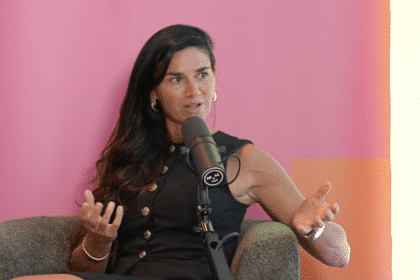Amir Rezaee, Head of Performance at Alpha Digital predicts that the ban of news content on the network could encourage marketers to build their presence across other platforms.
Marketers are experiencing a shake-up and a half
Facebook has had a busy start to the year and negotiations around the News Media Bargaining Code escalated quickly this week. The code calls for the tech giant to pay for shared news content, and practically overnight, Facebook decided to ban Australian publishers and Facebook users from sharing and accessing news on its platform.
Despite negotiations progressing, Facebook decided that this is its only viable option, even though engagement on Facebook could go down without news content being shared or read within the feed. Many publishers woke up to discover that they had lost a significant source of traffic overnight.
Meanwhile, marketers and publishers have also been closely following Google’s reaction to the code. Google search recently eluded to leaving the Australian market completely (and marketers had to start considering optimisation strategies for other search engines as damage control). Luckily for marketers, Google has managed to strike more favourable or shall we say ‘workable’ payment deals with major publishers in the last few days, rather than removing search completely.
Facebook and Google are heavily invested in by marketers and advertisers, and the threats have prompted many to question if they should be sharing their budget across other marketing channels to reduce their risks when market disruptions occur.
Now factor in the push for privacy
Outside of the ongoing enquiry into ‘fairness’ between big tech platforms and media companies, Apple (a company accounting for over one in four devices globally) has also been lobbying for customer privacy. As of January, all iOS apps (including Facebook) are required to adopt and display Apple’s new transparency prompt, which will ask iOS14 users for explicit permission to track users across apps and websites owned by other companies.
However, given that many people were probably unaware of how they have been tracked in the past and that the first option presented in the prompt is ‘do not allow tracking’, Facebook (and its advertisers) could lose visibility and targeting capability from a significant portion of their audience.
We believe users should have the choice over the data that is being collected about them and how it’s used. Facebook can continue to track users across apps and websites as before, App Tracking Transparency in iOS 14 will just require that they ask for your permission first. pic.twitter.com/UnnAONZ61I
— Tim Cook (@tim_cook) December 17, 2020
Disruptions to the media landscape will continue
This seems to be just the beginning of an evolution in the media landscape. Privacy regulation has been tightening up since GDPR was introduced in Europe and CPRA in California. All the while Google’s cookieless future is yet to roll out in 2022 and the opacity of the programmatic supply chain is also under review. The threats and changes are forcing all marketers to take a long hard look at their channel investment, and consider if their marketing mix is responsive and resilient enough to continue reaching their customers amid all of the changes.
Marketers can no longer put their eggs in one basket
The breakdown of negotiations between the Australian Government and Facebook will sadly hit small, independent publishers the hardest. Those who have relied heavily on Facebook for sharing content would have seen their traffic plummet overnight.
On the other hand, publishers who have created enough recall with their audience and positioned themselves as a ‘content destination’, built a presence on other social platforms (such as, like Instagram, Pinterest, and Twitter), or have an extensive and engaged email list to share news to directly will be able to weather the storm.
This lesson in the need for de-risking also applies to marketers who will be affected by the iOS14 update and reduced targeting capability on Facebook. The update will ultimately force the hand of marketers to rely on their own data sets and diversify their channel strategy. As a result content partnerships are in Vogue and many marketers are seeking publishers directly to try and reconnect with customers across the breadth of touchpoints that they use, while finding premium opportunities for brand alignment.
Thinking outside the box
If reaching audiences through online platforms is becoming increasingly difficult, then marketers can look to Programmatic Digital Out Of Home as an inclusion in their marketing mix. Flexible, data driven, easily applied to many locations (and easy to switch off in the case of snap lockdowns) it can offer more premium impressions within physical locations.
You will also have read many articles already observing the increased importance of building and maintaining your first party data and communicating to your audience directly via email. It’s an owned channel with an audience that has opted in to hear directly from your brand. It’s your own brand-customer ecosystem, so you can distribute your content there freely and engage with your audience directly. It’s also immune to algorithm updates and the customer data collected here can also be integrated with campaigns on other platforms. Make this channel a priority, if you haven’t already.
So, what’s next?
The evolving digital media landscape will continue to call for diversity. An agile, cross-channel digital marketing strategy is no longer a nice to have, it’s a prerequisite. In the case of Facebook, targeting will now be less reliant on automation and marketers are going to have to refine their skills. Rather than relying on Facebook to find their customers for them, marketers are now going to need to dissect existing data to get to know their customer’s interests and decision making processes intimately, and choose their placements mindfully.








